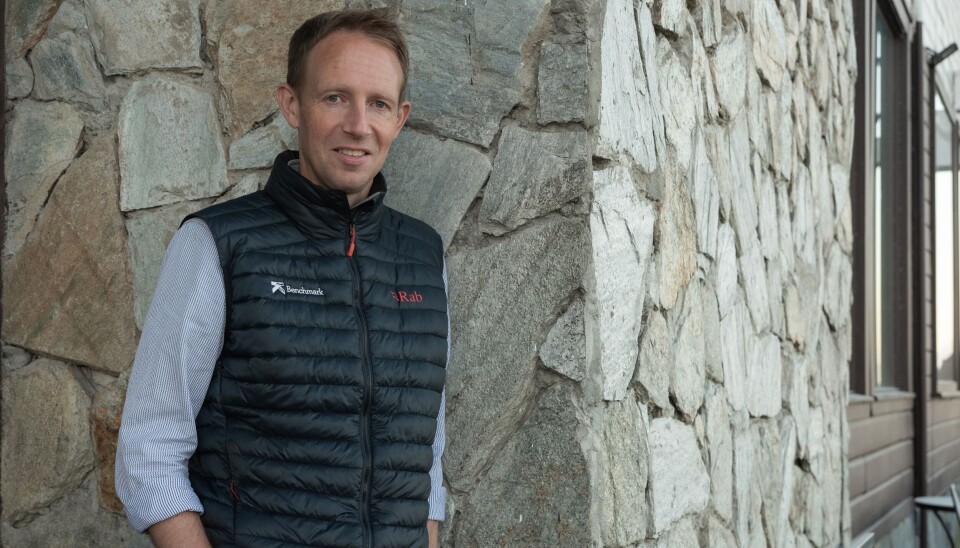Interview

Total resistance to sea lice: "we are focusing on achieving it"
During his recent visit to Chile, Ross Houston, Director of Genetics and Innovation at Benchmark Genetics Global, shared details about advances in genetics applied to salmon farming.
During his visit to Chile, Ross Houston, Director of Genetics and Innovation at Benchmark Genetics Global, along with Eduardo Rodríguez, Leader of Reproductive Technologies, held a series of key meetings with Chilean authorities and representatives of the salmon farming industry.
Accompanied by the local team, Houston delved into the advances in genetic research and development that the company leads globally, and how these could transform Chilean salmon farming.
In an exclusive interview with Salmonexpert, a media partner of LanbasedAQ, Houston details the ongoing projects, the importance of genetic editing, and the advances in the fight against diseases that affect salmon.
In what context does this visit to Chile take place?
Our meeting with the Chilean authorities was organized to present them with the research and development work we are conducting to continuously improve the genetics of our products, particularly our work on sterility and genetic editing. Currently, we can produce a sterile product using the triploid methodology, but we also have promising research to develop diploid sterile products on a commercial scale. We also described our R&D in genetic editing and discussed an action plan with the authorities to review the regulatory situation for the use of genetic editing in aquaculture in Chile. We hope to reach the stage where an appropriate and progressive regulatory framework can be established to allow the Chilean industry to benefit from innovation in genetic editing through the development of traits such as disease resistance, which is a main focus of our R&D work.
What genetic studies is the company leading globally and here in Chile?
We constantly innovate in our genetics to ensure that our selective breeding programs are delivering cumulative and incremental improvements in performance for growth rate, survival, and fillet characteristics. We select for many traits in the breeding goal and have developed genetic products that are specialized for rapid growth and robustness. This includes selection for resistance to SRS, BKD, and Caligus rogercresseyi which is done annually to ensure that our eggs carry these traits to benefit the customers and the industry. We also lead the way in the application of cryopreservation. Additionally, we have implemented methods to develop exclusively female products, which helps reduce the risk of early maturation.
What progress have you made in the genetic selection of fish resistant to Piscirickettsia salmonis and C. rogercresseyi?
These are traits that we record and continuously improve through our selective breeding program using genomic selection. In addition to our focus on improving growth rate, which can reduce the time fish spend in a risky sea environment, we are making good progress in improving robustness and resilience on two levels. Firstly, through core selection where these traits are enhanced in each generation, and secondly, in the latest generation, we use our expertise in genomic selection and cryopreservation to perform a strong and customized selection of commercial products with high growth and robustness. We see the results in practice, with positive reports of the competitive performance of our products and high levels of robustness and low mortality.
They recently participated in the study "Keratinocytes drive the epithelial hyperplasia key to sea lice resistance in coho salmon". What were the main discoveries and how will the results be applied at Benchmark to achieve more recent fish resistant to sea lice?
The outcome of this work is that we now understand in much greater detail the specific genes and pathways that differ between resistant salmonid species (such as coho salmon) and susceptible salmonid species (such as Atlantic salmon), and that allow resistant species to reject lice after attachment. This has led to specific genetic editing targets that have been applied in Atlantic salmon to generate genetically edited lines for R&D purposes that are being challenged with sea lice under experimental conditions. The results of this will be known soon, but we are optimistic that we will observe some promising target edits that provide enhanced resistance to sea lice in Atlantic salmon through genetic editing.
Then, we will take this research further, towards development, which includes testing the candidate products under commercial conditions in due time and when the regulatory environment allows it. It is a long-term project, but the prize at the end of an Atlantic salmon line with total resistance to sea lice is potentially transformative for our industry, and that is why we are focusing on achieving it.




















